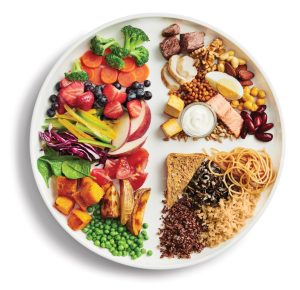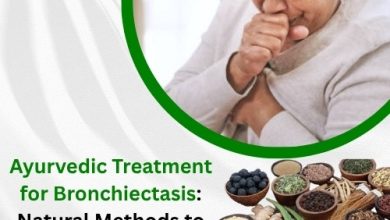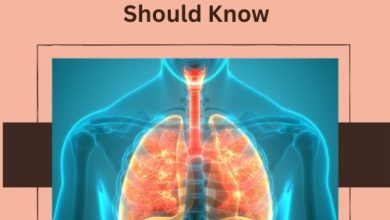Fuelling Your Lungs: A Nutrition Guide for Bronchiectasis

Living with bronchiectasis means you manage a chronic lung condition where your airways widen abnormally, making them prone to infection and mucus build-up. While medical treatments are essential, the food you eat plays a significant role in supporting your overall health, managing symptoms, and improving your quality of life. How specific dietary choices can benefit you, offering practical advice and a clear direction for optimising your nutrition.
I’ve spent over a decade creating health content for various sectors, and I’m a medical professional researcher with substantial experience in respiratory conditions. I understand how challenging it can be to sift through medical jargon and find reliable information. My aim here is to translate intricate medical knowledge into accessible, accurate, and engaging content, empowering you to make informed decisions about your diet.

Why Diet Matters for Bronchiectasis
Your diet isn’t just about weight management; it directly impacts your immune system, inflammation levels, energy, and even mucus production. For someone with bronchiectasis, a well-chosen diet can:
- Strengthen your immune system: A robust immune system helps your body fight off the frequent infections that are common with bronchiectasis.
- Reduce inflammation: Chronic inflammation can worsen lung damage. Certain foods have anti-inflammatory properties that can help.
- Maintain a healthy weight: Being underweight can weaken your immune system and reduce muscle mass, including respiratory muscles. Being overweight can make breathing more difficult.
- Provide energy: Managing a chronic condition requires energy. The right foods give you the sustained energy you need for daily activities and exercise.
- Support mucus clearance: While diet doesn’t directly clear mucus, some foods can indirectly help by reducing inflammation or supporting hydration.
Essential Nutrients and Food Groups
Let’s look at the key nutrients and food groups you should prioritise for a best diet for bronchiectasis.
1. Protein: Building Blocks for Health
Protein is crucial for repairing tissues, building muscle (including your respiratory muscles), and creating antibodies that fight infection. Aim for lean protein sources at every meal.
Good Sources:
- Lean Meats: Chicken, turkey, lean beef, fish (especially oily fish like salmon, mackerel, sardines).
- Eggs: A complete protein source, versatile and easy to prepare.
- Legumes: Lentils, beans, chickpeas – excellent plant-based protein and fibre.
- Dairy: Milk, yoghurt, cheese (opt for low-fat versions if managing weight).
- Nuts and Seeds: Almonds, walnuts, chia seeds, flax seeds – also provide healthy fats.
Actionable Advice: Include a palm-sized portion of protein with each meal. For example, add grilled chicken to your salad, lentils to your soup, or Greek yoghurt with berries for a snack.
2. Fruits and Vegetables: Antioxidant and Vitamin Boost
These vibrant foods are packed with antioxidants, Herbal Supplement for Bronchiectasis, vitamins, and minerals that protect your cells from damage and bolster your immune system. Focus on a wide variety of colours to get a broad spectrum of nutrients.
Good Sources:
- Leafy Greens: Spinach, kale, broccoli – rich in vitamins A, C, and K.
- Berries: Blueberries, strawberries, raspberries – high in antioxidants.
- Citrus Fruits: Oranges, grapefruits, lemons – excellent source of Vitamin C, which is vital for immune function.
- Brightly Coloured Vegetables: Carrots, sweet potatoes, bell peppers – provide beta-carotene, a precursor to Vitamin A.
Actionable Advice: Aim for at least 5 portions of fruits and vegetables daily. Add vegetables to omelettes, soups, and stews, and snack on fruit throughout the day.
3. Whole Grains: Sustained Energy and Fibre
Whole grains provide sustained energy release and are a good source of fibre, which supports digestive health. A healthy gut contributes to a stronger immune system.
Good Sources:
- Oats: Excellent for breakfast, providing slow-release energy.
- Brown Rice: A healthier alternative to white rice.
- Wholemeal Bread and Pasta: Choose these over refined white versions.
- Quinoa: A complete protein and fibre-rich grain.
Actionable Advice: Swap refined grains for whole grains. For instance, have oatmeal for breakfast instead of sugary cereals, or brown rice with your evening meal.

4. Healthy Fats: Reducing Inflammation
Not all fats are bad. Healthy fats, particularly omega-3 fatty acids, have anti-inflammatory properties that can be beneficial for lung health.
Good Sources:
- Oily Fish: Salmon, mackerel, sardines, trout – rich in omega-3s.
- Avocado: Contains monounsaturated fats and vitamins.
- Nuts and Seeds: Walnuts, flax seeds, chia seeds.
- Olive Oil: Use for cooking and salad dressings.
Actionable Advice: Incorporate oily fish into your diet at least twice a week. Use olive oil for cooking and add avocado to salads or sandwiches.
5. Hydration: Essential for Mucus Management
Staying well-hydrated is critical for people with bronchiectasis. Adequate fluid intake helps keep mucus thin and easier to clear, reducing the risk of blockages and infections.
Good Sources:
- Water: The best choice. Carry a water bottle and sip throughout the day.
- Herbal Teas: Soothing and hydrating.
- Diluted Fruit Juices: In moderation due to sugar content.
- Clear Broths: Hydrating and can provide some nutrients.
Actionable Advice: Aim for at least 8-10 glasses of water daily, more if you are exercising or in a warm climate. Listen to your body and drink when you feel thirsty.
Foods to Limit or Avoid
Just as some foods support your health, others can worsen symptoms or contribute to inflammation.
1. Processed Foods and Sugary Drinks
These are often high in unhealthy fats, sugar, and artificial additives. They can contribute to inflammation, weight gain, and offer little nutritional value.
Why to Limit: They provide empty calories and can trigger inflammatory responses in the body.
Actionable Advice: Reduce your intake of crisps, biscuits, cakes, fizzy drinks, and ready meals. Prepare meals at home where you control the ingredients.
2. Excessive Salt
High salt intake can lead to fluid retention, which can exacerbate issues for some individuals, especially those with co-existing heart conditions.
Why to Limit: Can contribute to swelling and may put extra strain on your system.
Actionable Advice: Check food labels for salt content. Use herbs and spices to flavour your food instead of relying on salt.
3. Dairy (Individual Basis)
For some individuals with bronchiectasis, dairy products can thicken mucus. This is not universal, and many people tolerate dairy well.
Why to Limit (if applicable): May increase mucus thickness for some.
Actionable Advice: If you notice dairy products worsen your mucus, try eliminating them for a few weeks to see if symptoms improve. There are many dairy alternatives available, such as almond milk or oat milk.
4. Inflammatory Fats (Trans Fats and Excessive Saturated Fats)
These fats, found in fried foods, processed snacks, and some fatty meats, can promote inflammation in the body.
Why to Limit: Contribute to systemic inflammation, which can negatively impact lung health.
Actionable Advice: Avoid trans fats found in many baked goods and fast food. Limit saturated fat from fatty cuts of meat and full-fat dairy.
Crafting Your Bronchiectasis Diet Plan
Creating a personalised bronchiectasis diet plan involves understanding your specific needs, preferences, and any co-existing conditions.
Meal Planning Tips:
- Small, Frequent Meals: Eating smaller meals more frequently can help manage energy levels and prevent feeling too full, which can make breathing uncomfortable. Aim for 3 main meals and 2-3 healthy snacks.
- Focus on Nutrient Density: Choose foods that pack a lot of nutritional punch for their calorie content.
- Listen to Your Body: Pay attention to how different foods make you feel. If a food seems to worsen your symptoms, consider reducing or eliminating it.
- Cook at Home: This gives you control over ingredients, allowing you to avoid excessive salt, unhealthy fats, and additives.
- Batch Cooking: Prepare larger quantities of healthy meals and portion them for the week. This saves time and ensures you always have nutritious options available.
Sample Daily Menu:
This is just an example, and you can adjust it based on your preferences and dietary needs.
- Breakfast: Rolled oats with berries, a sprinkle of nuts/seeds, and a dollop of Greek yoghurt.
- Mid-Morning Snack: An apple with a small handful of almonds.
- Lunch: Large mixed salad with grilled chicken or chickpeas, dressed with olive oil and lemon juice.
- Afternoon Snack: Vegetable sticks with hummus.
- Dinner: Baked salmon with roasted sweet potatoes and steamed broccoli.
- Evening (Optional): Herbal tea.
Important Considerations and When to Seek Professional Advice
While this guide provides general recommendations for a diet for bronchiectasis, it’s crucial to remember that everyone is different.
- Individual Nutritional Needs: Your specific calorie requirements and nutrient needs may vary based on your age, activity level, and the severity of your condition.
- Malnutrition and Weight Management: If you are struggling with unintentional weight loss or gain, or if you have a poor appetite, it’s vital to seek professional help. Malnutrition can weaken your immune system and make you more susceptible to infections.
- Food Sensitivities or Allergies: Be aware of any foods that trigger digestive upset or other adverse reactions for you.
- Medication Interactions: Some foods can interact with medications. For example, grapefruit can affect certain drugs. Always discuss your diet with your doctor or pharmacist.
- Co-existing Conditions: If you have other health conditions like diabetes, kidney disease, or heart disease, your dietary needs will be more specific.
I strongly recommend consulting with a registered dietitian or a healthcare professional who specialises in respiratory conditions. They can assess your individual needs, provide personalised dietary advice, and help you create a safe and effective bronchiectasis diet strategy. They can also help address any concerns about unintentional weight loss, which is a common issue for some individuals with this condition. For more information on managing chronic respiratory conditions, you may find valuable insights in our article on [effective breathing exercises for lung health].
Beyond the Plate: Lifestyle Factors
Diet is a cornerstone of managing bronchiectasis, but it works best in conjunction with other healthy lifestyle choices.
- Regular Exercise: Physical activity helps strengthen your respiratory muscles, improves lung capacity, and boosts your immune system. Discuss suitable exercise routines with your doctor or physiotherapist.
- Smoking Cessation: If you smoke, quitting is the single most important step you can take to protect your lungs and slow the progression of bronchiectasis.
- Good Hygiene: Frequent handwashing and avoiding contact with sick individuals can help prevent infections.
- Adherence to Medical Treatment: Continue to take all prescribed medications and follow your doctor’s treatment plan diligently.
- Stress Management: Chronic stress can impact your immune system. Find healthy ways to manage stress, such as mindfulness, yoga, or spending time in nature.
Your Proactive Role in Health
You have an active role in managing your bronchiectasis, and your diet is a powerful tool in your arsenal. By making informed food choices, you can support your immune system, reduce inflammation, maintain a healthy weight, and enhance your overall well-being.
Remember, this isn’t about restrictive diets but about making sustainable, positive changes. Focus on nourishing your body with whole, unprocessed foods, staying hydrated, and listening to your body’s signals. Work closely with your healthcare team to develop a comprehensive plan that includes nutrition, medication, and lifestyle adjustments. By embracing these strategies, you can take significant steps towards better lung health and an improved quality of life.




